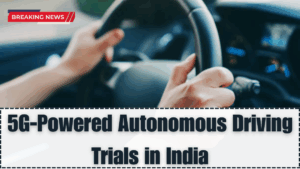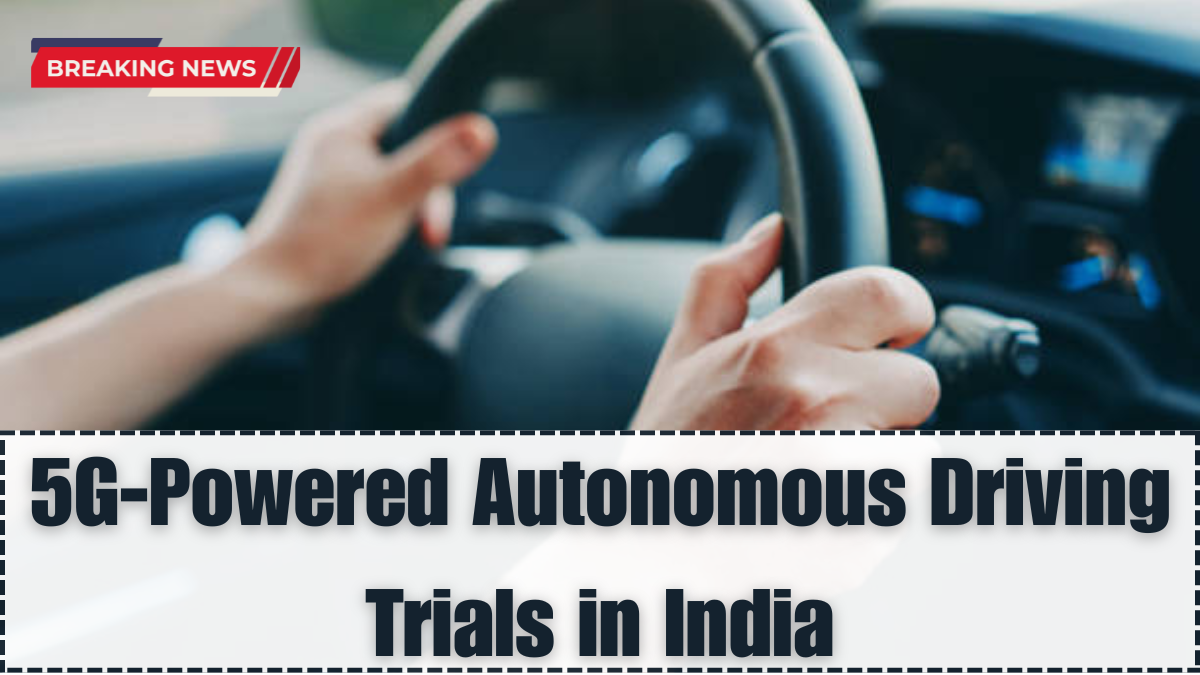India is stepping into the future of mobility with cutting-edge trials involving 5G in autonomous vehicles. Backed by major telecom companies, automobile OEMs, and government smart city initiatives, these pilot programs are enabling real-time, AI-powered driving capabilities on Indian roads. The combination of ultra-low latency 5G and Vehicle-to-Everything (V2X) technology is transforming how vehicles communicate, make decisions, and navigate complex environments.
The rise of 5G AV India initiatives is a significant leap in automotive innovation, making autonomous driving safer, faster, and more adaptive to Indian traffic conditions. These projects also serve as a testing ground for broader deployment in the coming years.

What 5G Brings to Autonomous Vehicles
The use of 5G in autonomous vehicles provides the speed and responsiveness required for split-second decisions on the road. Unlike traditional mobile networks, 5G enables vehicles to communicate not just with each other, but with infrastructure, pedestrians, and traffic control systems in real-time.
Key benefits include:
-
Latency as low as 1 millisecond, critical for safety-critical decisions
-
Massive data transfer for live HD maps, traffic analytics, and sensor fusion
-
V2X connectivity to alert vehicles about roadblocks, emergency vehicles, or jaywalking pedestrians
-
Network slicing, allowing customized bandwidth for specific AV operations
These capabilities elevate autonomous driving from being purely sensor-reliant to being context-aware and highly responsive.
India’s Smart City-Based AV Trials
Several 5G AV India pilot programs are underway in smart city corridors, led by telecom providers like Jio and Airtel in partnership with auto giants and research institutions.
Major trial zones include:
-
Ahmedabad Smart City: Testing AV shuttles on controlled urban loops
-
Hyderabad T-Hub Campus: Autonomous EV pods running on campus with 5G and AI
-
Bangalore’s Whitefield Corridor: Vehicle-to-infrastructure testing in mixed traffic environments
-
Delhi NCR Industrial Parks: Use of 5G-powered delivery bots and autonomous logistics
These trials focus on real-world scenarios like lane-switching, pedestrian detection, emergency stops, and adaptive cruise control—all made possible by 5G in autonomous vehicles.
V2X Technology – A Key Enabler
Vehicle-to-Everything (V2X) communication is the bridge between vehicles and their surroundings. Powered by 5G, it allows seamless data exchange between:
-
Vehicle-to-Vehicle (V2V): For coordinating overtakes and safe distances
-
Vehicle-to-Infrastructure (V2I): Like traffic lights, cameras, and road sensors
-
Vehicle-to-Network (V2N): For cloud-based navigation and alerts
-
Vehicle-to-Pedestrian (V2P): Enhancing pedestrian safety in dense urban zones
The result is a fully connected ecosystem where every element plays a role in safety, efficiency, and decision-making.
Challenges and Regulatory Developments
While the trials are promising, there are still hurdles to widespread deployment of 5G AV India solutions:
| Challenge | Status in 2025 |
|---|---|
| Data privacy regulations | Under review by MeitY and NITI Aayog |
| Spectrum allocation for V2X | Allocated in limited zones |
| AV policy framework | Awaiting standardization |
| Urban infrastructure upgrades | Ongoing in smart cities |
India’s Ministry of Road Transport and Highways is working on detailed AV guidelines, while TRAI is pushing for full rollout of 5G across metro and Tier-1 corridors by 2026.
FAQs
What role does 5G play in autonomous vehicles?
5G provides ultra-low latency and high bandwidth, enabling real-time decision-making and communication between vehicles, infrastructure, and networks.
Where are 5G AV trials currently happening in India?
Cities like Ahmedabad, Hyderabad, Bengaluru, and Delhi NCR are running pilot projects with autonomous vehicles supported by 5G.
What is V2X technology?
V2X (Vehicle-to-Everything) allows vehicles to communicate with other vehicles, infrastructure, pedestrians, and networks to enhance safety and performance.
Are autonomous vehicles allowed on public roads in India?
Currently, AV trials are limited to controlled zones. A national regulatory framework is under development for broader deployment.
What are the challenges to deploying AVs with 5G in India?
Key challenges include infrastructure readiness, data privacy regulations, spectrum allocation, and the lack of standardization in AV policy.
Click here to know more.
